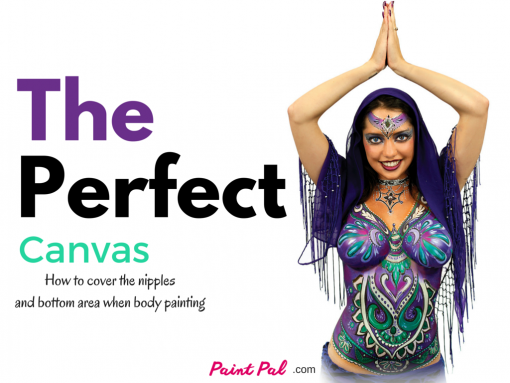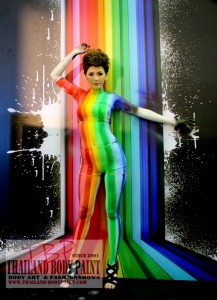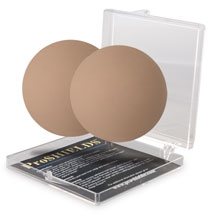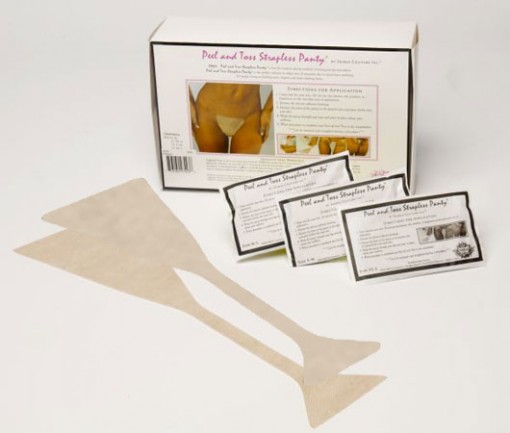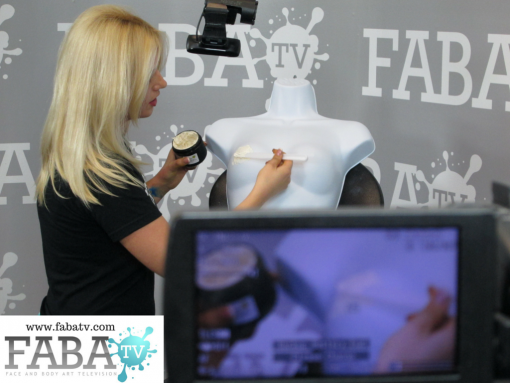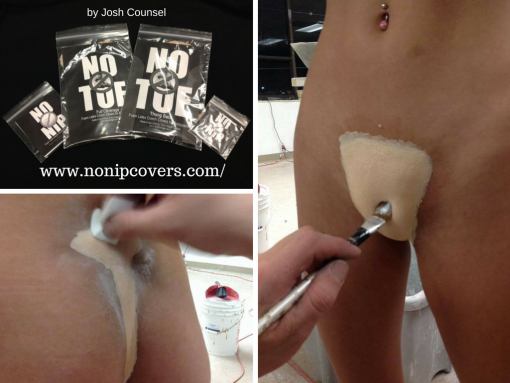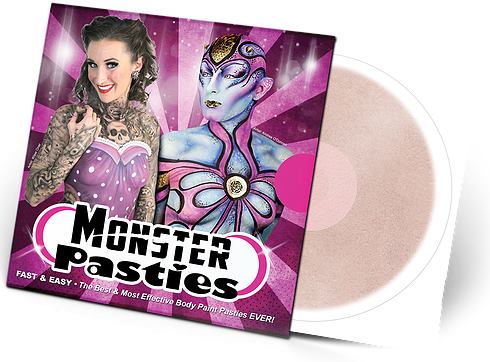By Silly Heather
Body Painting is growing more popular by the day. 12 years ago, hotels rejected hosting the FABAIC because of the nudity, and now there is a TV show dedicated to the art. Body painting can be seen on billboards, music videos, night clubs and all over mainstream media and yet we still struggle to cover the private parts without compromising the artwork.
Over the years I have tried several products to achieve perfect canvas looking body art, because nothing sticks out like a sore thumb more than wrinkly pasties, or baggy discolored undies. I have tested several nipple covers, and bottom area covers, and have found that if you take the time to cover the nether regions properly you can ultimately create the “perfect canvas”.
Painting over fabric:
Because full nudity and body painting is still seen seen as racy in some places, body painting over clothing ( like undies and bras) is necessary. The downside to painting over clothing is 1) matching colors, 2) using extra paint because the material absorbs more paint than the skin 3) finding the right material conducive to body painting. Not every material is easy to paint on top of. Some materials like 100% cotton tend to adsorb lot more paint and you also have to pay more attention to the area under the fabric so that you don’t miss spots and reveal unpainted areas with movement. You will want to avoid shiny materials like acrylic or extra heavy cottons because they absorbs more paint. Really awesome boy cut shorts and thongs can be found at Macys and Dillards and range in price from $8 to $20 a pair.
Nipple Covers:
5 years ago there was little variety when it came to covering nipples. Most painters used either band aids or the flower petal nipple pasties. The problem with bandaids and the flower covers is that they draw attention to the boobs and take a way from the artwork. Its hard to focus on anything but large flowers on the boobs, even when the artwork is incredible.
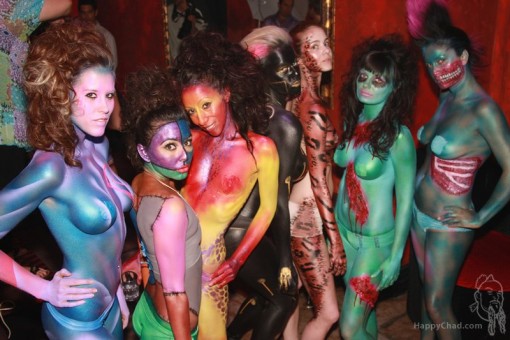
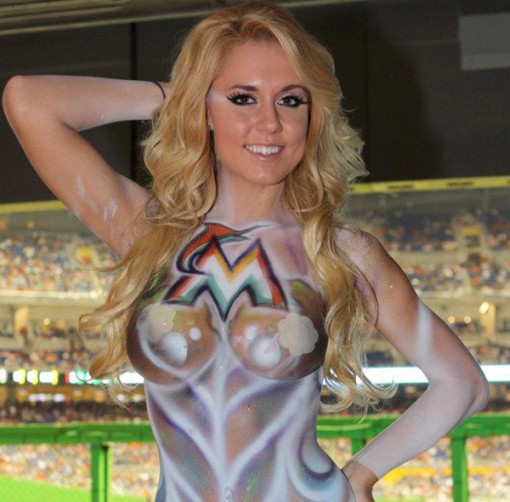
It is still important to cover the nipples. Nipples (women’s) are banned on Facebook and your images will more than likely be removed if you have exposed nips. So when you are creating a body painting piece you will want to cover the nipples if you want to share the picture on the internet.
ProShield covers were some of the first quality nipple covers to reach the market. They are hand made with a special rubber latex that covers the actual nipple and removes the possibility of “headlights”. The upside is that they are reusable ( same model) blend seamlessly into the skin, come in a variety of sizes, and have tapered edges so that can easily be blended into the skin for less of a noticeable wear. The downside to ProShield covers are, they must be glued on the skin and in some cases if the nipples begin to get hard or extra cold the skin contracts and the pasties must be re glued. The other factor is cost. ProShields run about $15 a pair. So for painters with limited budgets the cost of investing in good nipple covers isn’t possible. ProShields also make a bottom cover. The bottom cover has been the hardest product to create. The ProShield bottom creates a smooth finish along the vaginal area and acts much like a g string. The only downside to the ProShield bottoms is that it too must be glued and also once it is in place it is not that easy to remove to use the bathroom. But that is the same problem you will encounter with any bottom cover prosthetic.
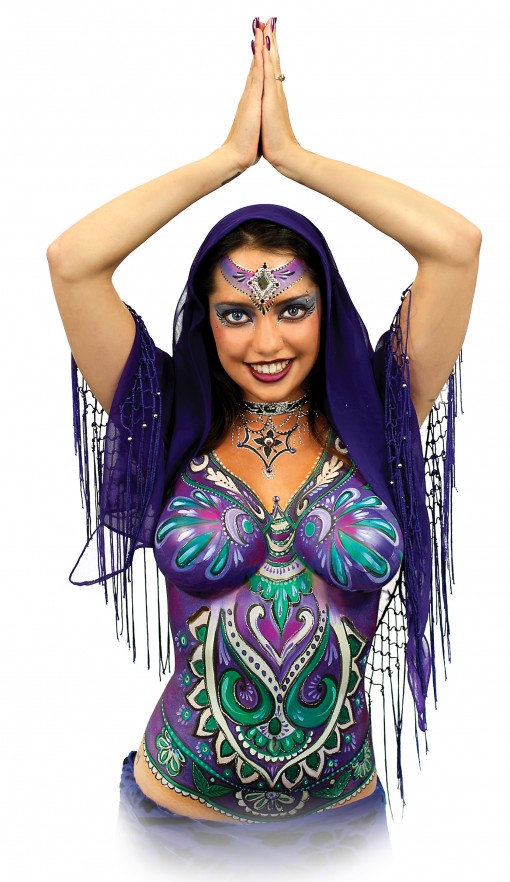
The ProShield bottom cover creates a very smooth surface and has been the go to bottom cover for body painters that prefer not to paint over clothing.
Disposable bottom covers are like a band aid for your bottom. They are inexpensive, and not the strongest but they do cover. They have peel and stick edges and are available in three sizes. For extra hold I have seen artists use them for the first layer then reinforcing them with latex and mesh or paper towels to create a more secure edging. Again, make sure your model uses the bathroom before you apply the cover to avoid having to re glue it. The material of the strapless panty is a soft mesh material similar to a cloth band aid. It absorbs the paint well and is very lightweight for the model. An added bonus, besides price is that they are disposable so you dont have to feel like you spent a bunch on wasted bottom covers.And the finished product is pretty nice.
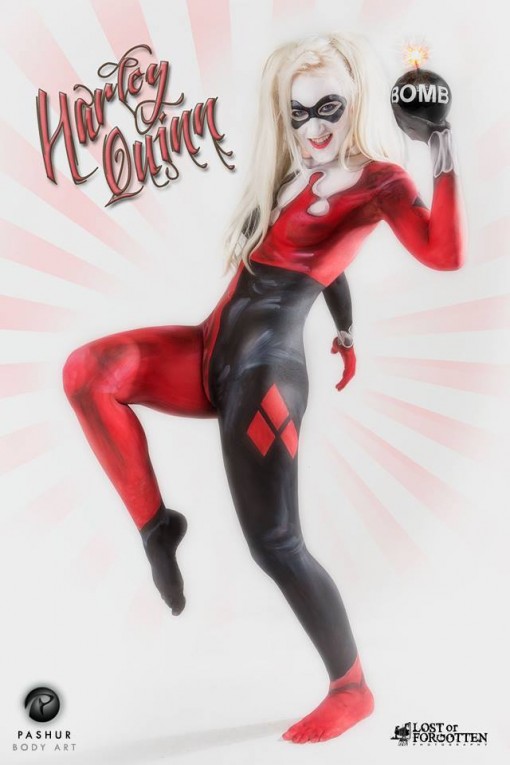
Using Latex to create covers:
For many years body painters used Liquid latex as a body paint. Mainly because Liquid latex creates an “extra” layer on the skin and makes you feel less “naked”. The downside to using liquid latex as a body paint is that 1) latex allergies are common and can be super uncomfortable 2) latex stinks ( smelly) 3) latex can hurt to remove if you have hair and lastly its less economical and less comfortable than body paint. The upside to latex is it is inexpensive for creating edges and special effects. Meaning you can use paper towels to create nipple and bottom covers by covering the nipples and then covering the paper towel with layers of latex once it dries you have created a shield or nipple/ bottom cover. It takes a little while for the latex to dry and for application but once it does you have custom covers to suit your models needs.
You can see how Athena used Zombie Skin ( a foam latex) to create nipple covers for her body painting during her class on FABAtv. com
There are also a few different brands of latex nipple covers by Body FX and No Nips by Josh Counsel.
The last and most recent product to hit the body painting market is Monster Pasties.
Monster Pasties are super amazing because they do not require any glue, the model can apply them, themselves in a matter of minutes, and they are waterproof. They dont bunch or wrinkle and look seamless because they dont have edges. They are transfer on covers so you dont have to blend anything or use latex, you simply transfer them onto the skin using water.
Monster Pasties currently do not offer a bottom cover by I am sure the creator is working on something.
The only downside to Monster pasties is that they are a one time use. But you will love the time you save and the money you save buy not having to use glue or wait for them to dry.
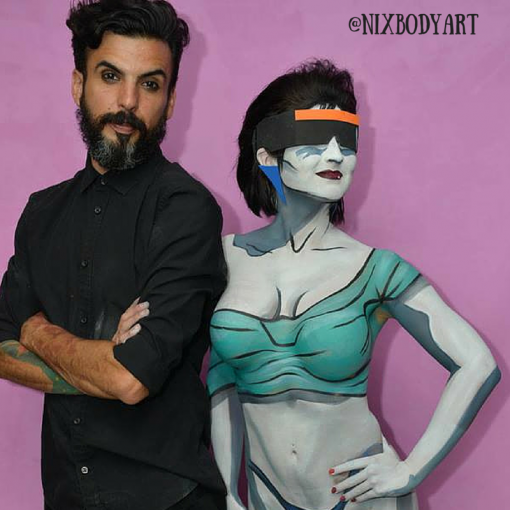
I hope this blog helped you decide which covers are right for you and ways to cover your canvas. There’s still such a fine line between art and nudity, so when you have the right tools to present body art as a canvas versus a sexual image it helps emphasize your art.
As always connect with me on social media, subscribe to the blog and #tag us in your pics. We love to hear from you.
-Your Paint Pal
Heather
